Not SLBM, sub launched cruise missile. Congress never the less gave it limited funding for this year despite the nuclear posture review and the fact that the USN has no interest in it. I've heard anecdotally that carrying special weapons was despised by the surface fleet and fast attack force and I suspect no one at the navy is in a rush to have to have nukes occupy weapon space and desk time outside the boomer force.Cancelling the SLBM program? I hope it's imaginary.
You are using an out of date browser. It may not display this or other websites correctly.
You should upgrade or use an alternative browser.
You should upgrade or use an alternative browser.
Current Nuclear Weapons Development
- Thread starter bobbymike
- Start date
- Joined
- 3 June 2011
- Messages
- 17,317
- Reaction score
- 9,041
Got to correspond with a former Leahy class XO before he died. They hated the nuclear Terrier for exactly that reason. I suspect that might have changed had they actually had to use them though.Not SLBM, sub launched cruise missile. Congress never the less gave it limited funding for this year despite the nuclear posture review and the fact that the USN has no interest in it. I've heard anecdotally that carrying special weapons was despised by the surface fleet and fast attack force and I suspect no one at the navy is in a rush to have to have nukes occupy weapon space and desk time outside the boomer force.Cancelling the SLBM program? I hope it's imaginary.
Forest Green
ACCESS: Above Top Secret
- Joined
- 11 June 2019
- Messages
- 5,017
- Reaction score
- 6,487
I thought so, but the quote was:Not SLBM, sub launched cruise missile. Congress never the less gave it limited funding for this year despite the nuclear posture review and the fact that the USN has no interest in it. I've heard anecdotally that carrying special weapons was despised by the surface fleet and fast attack force and I suspect no one at the navy is in a rush to have to have nukes occupy weapon space and desk time outside the boomer force.
The decision to terminate the nuclear SLBM program will be of particular concern to Japan. As far back as 1965, Japan told the U.S. that, “We expect the United States to retaliate immediately using nuclear weapons” if there is a war with China. Japan preferred the strikes to be launched from the sea.
Which is why instead of SLCM, I would have converted the Zumwalts to nuclear strike platforms with a nuclear IR-CPS, giving them a clear mission and the ability to use them for signaling, which you can't do with a submarine.
I feel alert B-52s could handle the signaling mission. You could even given them call signs on FlightRadar24 like ALERT1, ALERT2, etc. (clearly they'd want to remember to turn off the transponder if it was go time).
As for an IR weapon, it isn't clear that a W-80 type warhead would fit/be compatible with CPS, particularly as CPS hasn't been tested successfully end to end yet. Size could be an issue and I would think a lot of testing would have to be done to confirm the warhead could tolerate the acceleration and thermal conditions.
As for an IR weapon, it isn't clear that a W-80 type warhead would fit/be compatible with CPS, particularly as CPS hasn't been tested successfully end to end yet. Size could be an issue and I would think a lot of testing would have to be done to confirm the warhead could tolerate the acceleration and thermal conditions.
What's not to like with NORI's and NSI's (AF speak, don't know what the squids call them)Got to correspond with a former Leahy class XO before he died. They hated the nuclear Terrier for exactly that reason. I suspect that might have changed had they actually had to use them though.
- Joined
- 21 April 2009
- Messages
- 13,154
- Reaction score
- 6,011

Congress poised to shoot down Biden’s nuclear rollback
The White House wants to cancel a nuclear cruise missile, but Democrats have joined Republicans to try to save it.
Forest Green
ACCESS: Above Top Secret
- Joined
- 11 June 2019
- Messages
- 5,017
- Reaction score
- 6,487
Rocket carrying new nuclear missile component explodes in late-night test
Officials are investigating the cause of the mishap, which did not injure anyone.
- Joined
- 21 April 2009
- Messages
- 13,154
- Reaction score
- 6,011
Forest Green
ACCESS: Above Top Secret
- Joined
- 11 June 2019
- Messages
- 5,017
- Reaction score
- 6,487
Even their rocket science is wrong at the moment.
- Joined
- 21 April 2009
- Messages
- 13,154
- Reaction score
- 6,011
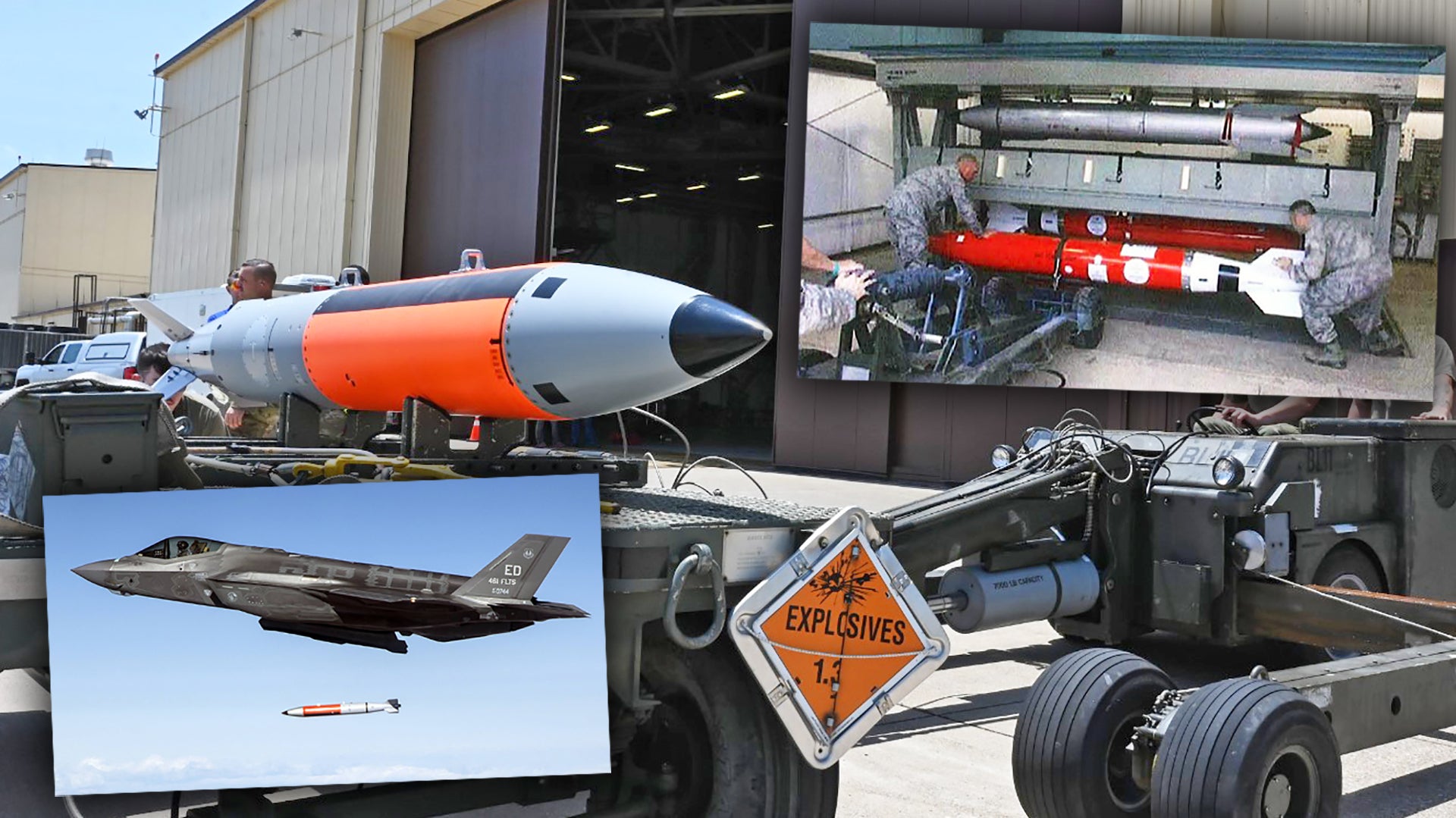
New B61-12 Bomb's Precision Unusable By Some Nuclear Strike Jets
The tail kit guidance system is a central feature of the B61-12 nuclear bomb, each one of which costs more than its weight in gold.
- Joined
- 21 April 2009
- Messages
- 13,154
- Reaction score
- 6,011
- Joined
- 21 April 2009
- Messages
- 13,154
- Reaction score
- 6,011
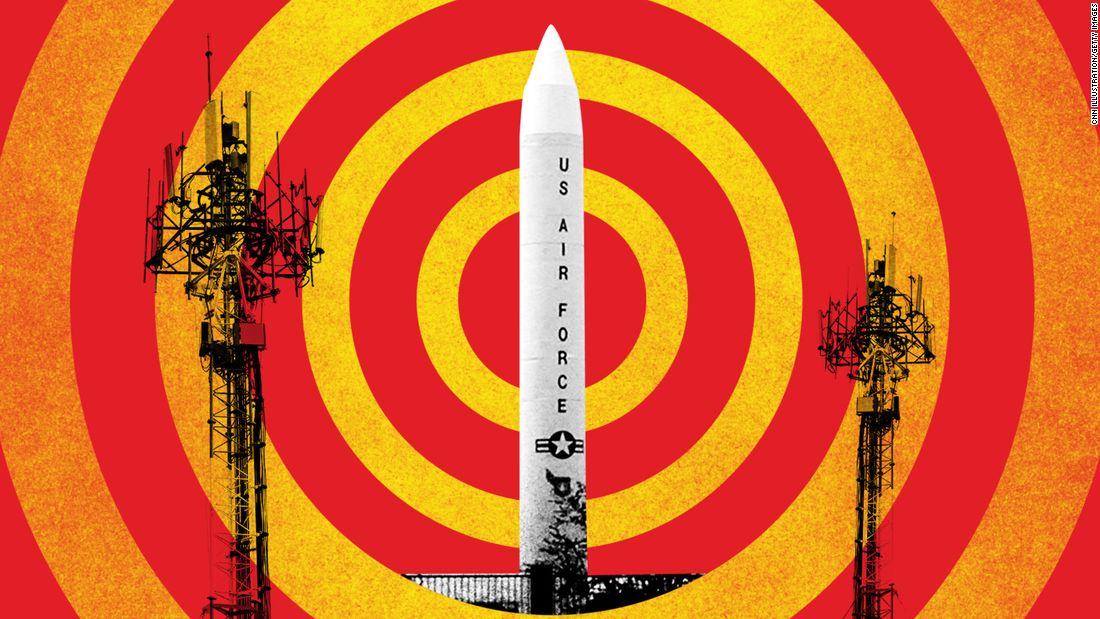
CNN Exclusive: FBI investigation determined Chinese-made Huawei equipment could disrupt US nuclear arsenal communications
On paper, it looked like a fantastic deal. In 2017, the Chinese government was offering to spend $100 million to build an ornate Chinese garden at the National Arboretum in Washington DC. Complete with temples, pavilions and a 70-foot white pagoda, the project thrilled local officials, who hoped...
In_A_Dream
ACCESS: Top Secret
- Joined
- 3 June 2019
- Messages
- 571
- Reaction score
- 460
Espionage is a very intricate affair. Reminds me of this:
CNN Exclusive: FBI investigation determined Chinese-made Huawei equipment could disrupt US nuclear arsenal communications
On paper, it looked like a fantastic deal. In 2017, the Chinese government was offering to spend $100 million to build an ornate Chinese garden at the National Arboretum in Washington DC. Complete with temples, pavilions and a 70-foot white pagoda, the project thrilled local officials, who hoped...www.cnn.com
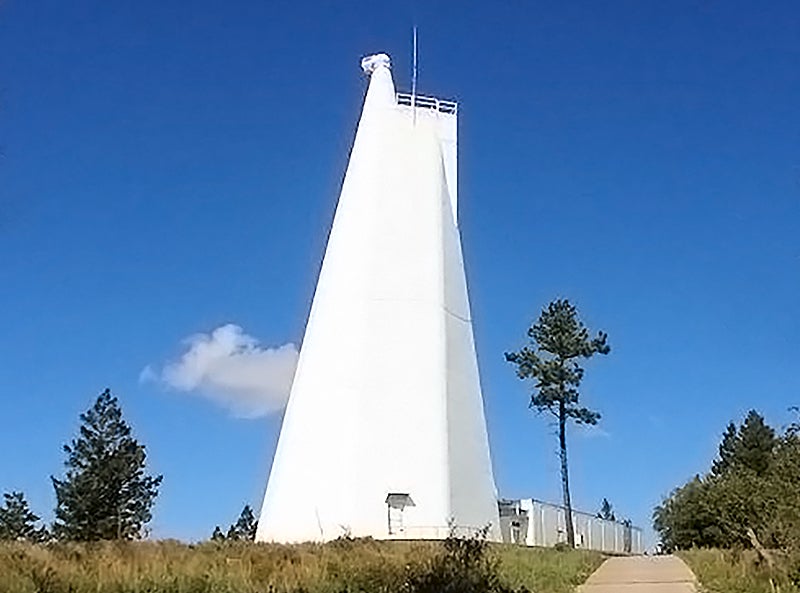
Mysterious Evacuation Of Solar Observatory Overlooking White Sands Smells Like Espionage
The bizarre incident has spurred outlandish theories, but based on what we know and the location, there are more plausible explanations.
- Joined
- 21 April 2009
- Messages
- 13,154
- Reaction score
- 6,011
Originally saw this on Facebook. Should we need to publicly advertise to work on our most advanced nuclear warhead?
https://www.usajobs.gov/job/6661643...EsuwpPZOLi0hQkyrj4o0vxTtjJnjHqpo-MfMh8Xp-Qf8Y
https://www.usajobs.gov/job/6661643...EsuwpPZOLi0hQkyrj4o0vxTtjJnjHqpo-MfMh8Xp-Qf8Y
Forest Green
ACCESS: Above Top Secret
- Joined
- 11 June 2019
- Messages
- 5,017
- Reaction score
- 6,487
I've just noticed that all inspections of nuclear arsenals are currently suspended, which makes the New START Treaty meaningless.
Forest Green
ACCESS: Above Top Secret
- Joined
- 11 June 2019
- Messages
- 5,017
- Reaction score
- 6,487
Forest Green
ACCESS: Above Top Secret
- Joined
- 11 June 2019
- Messages
- 5,017
- Reaction score
- 6,487
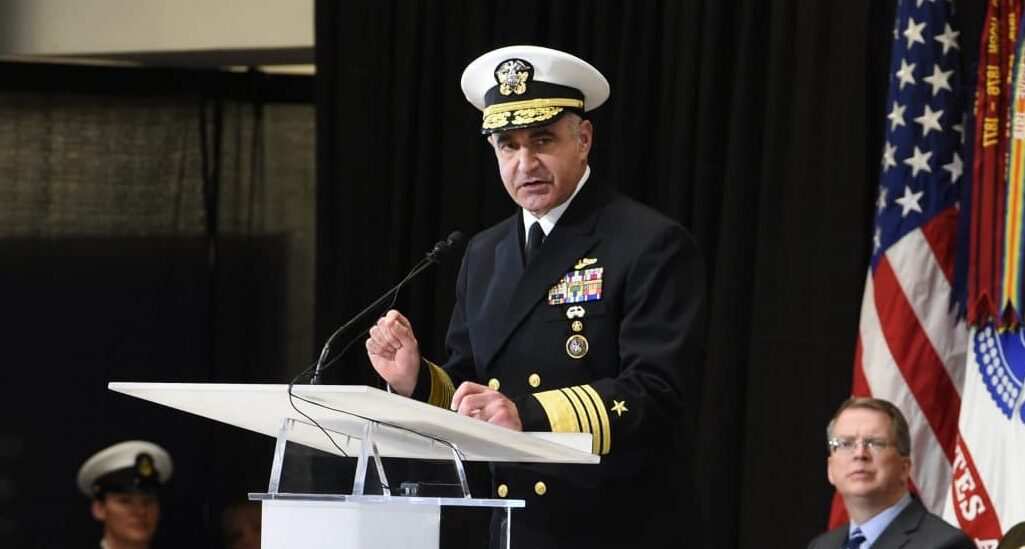
US military ‘furiously’ rewriting nuclear deterrence to address Russia and China, STRATCOM chief says
The United States is "furiously" writing a new nuclear deterrence theory that simultaneously faces Russia and China, said the top
In_A_Dream
ACCESS: Top Secret
- Joined
- 3 June 2019
- Messages
- 571
- Reaction score
- 460
And there are parties who are actively seeking the elimination of the Sentinel lol.
US military ‘furiously’ rewriting nuclear deterrence to address Russia and China, STRATCOM chief says
The United States is "furiously" writing a new nuclear deterrence theory that simultaneously faces Russia and China, said the topamericanmilitarynews.com
Forest Green
ACCESS: Above Top Secret
- Joined
- 11 June 2019
- Messages
- 5,017
- Reaction score
- 6,487
Some people live in a world which doesn't exist.And there are parties who are actively seeking the elimination of the Sentinel lol.
kaiserd
I really should change my personal text
- Joined
- 25 October 2013
- Messages
- 1,665
- Reaction score
- 1,615
Almost zero.What are the odds that the conclusion of said new strategy will be: "we have to have as many nukes as Russia and China combined."
What are the odds that the conclusion of said new strategy will be: "we have to have as many nukes as Russia and China combined."
Probably not, but clearly an increase is warranted and will almost certainly occur. I suspect there is some upper limit after which there are enough weapons to absolutely destroy both opponents, though lots of people will disagree with exactly what that magic number is.
US missiles are downloaded such that nearly doubling the number of warheads on existing launchers is an achievable goal.
In_A_Dream
ACCESS: Top Secret
- Joined
- 3 June 2019
- Messages
- 571
- Reaction score
- 460
China has the luxury of concealing its growing nuclear weapon stockpiles, which makes the US an easier target for nuclear watchdogs if they increase theirs in response. Although if the US really wanted to put a lot of pressure on China and make a better case for a new START, they'd be best served by providing the public with what they know about those stockpiles.
Forest Green
ACCESS: Above Top Secret
- Joined
- 11 June 2019
- Messages
- 5,017
- Reaction score
- 6,487
You need as many for China as for Russia approximately. So it would need to be at least twice the minimum amount required to deter one, which means 2 x 2,000 strategic warheads (not including slow bomber delivered ones), and they need to be MaRVs. Beyond that point there is no point pursuing an arms race unless the ABM factor becomes considerable. 1996 deployed levels would be reasonable. Not too interested in stockpiling beyond what is deployed.What are the odds that the conclusion of said new strategy will be: "we have to have as many nukes as Russia and China combined."
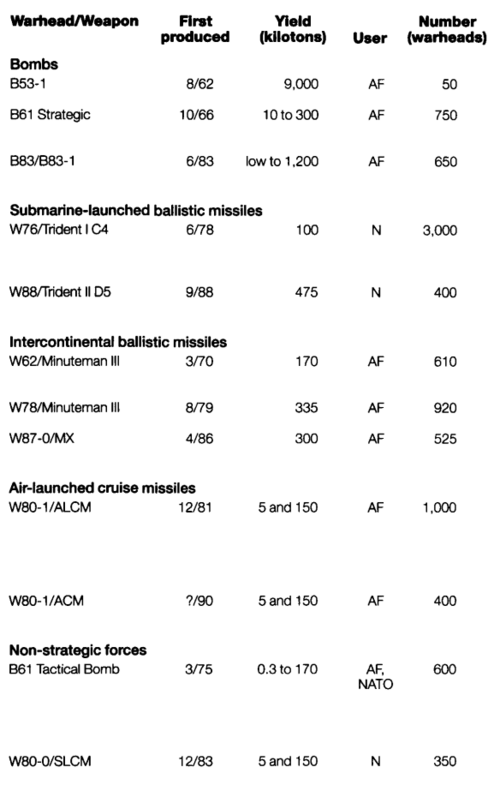
Last edited:
The current plan probably would probably see a net drop in SLBMs, a similar number of ICBMs (though likely of greater throw weight) and an increase in nuclear cruise missiles. Though presumably so long as new launch platforms were in production (and there should be new bomber, ICBM, and SSBN lines by the end of the decade) more could be purchased if necessary. An ICBM force larger than 450 missiles would require new silo construction (or some other deployment method).
The current ICBM force is 400 single warhead missiles, half W78 and half W87. The W87 missiles were apparently heavily re-engineered and more or less permanently de-MIRV'd; the W78 missiles could accept two more warheads. The 50 empty silos could presumably be filled with MMIIIs with three more W78s a piece. So roughly 650 additional warheads could be fielded, with 200 missiles retaining single warheads. The Sentinel likely will also have up to three warheads, though we could hold out hope for more.
The SLBM force is 14 boats with 12 "deployed" at any given time for 240 deployed missiles and roughly 900-1000 warheads at any given time. This works out to ~4 warheads on average, so that number could be almost doubled (presumable some missiles would still be down loaded to provide alternate strategic options; if nothing else the W-76 mod 2 is likely loaded only 1-2 warheads per missile). The Columbia class would reduce this to twelve boats of 16 launchers, though perhaps since it will be fueled for life it won't have 1-2 boats in years long overhauls to help alleviate the downward trend. Additional boats could always be purchased if necessary, though there would probably be a capability gap at this point as Ohio's were retired.
The B-52 force is to remain at 76 (only 11 spares are available at AMARG). Only around ~48 of these are cleared for nuclear weapons currently; the rest count as "undeployed". The only actively deployed strategic weapons are at Minot and are suspected to be some ~250 AGM-86s, with a similar number in storage at Kirtland. B-52s apparently don't train to deploy nuclear free fall bombs any more so none are stored at Minot (best OSINT guess). The B-2s would have access to B-61/83 stored at Whiteman. The B-1s have completely denuclearized for some time. Presumably post New START the rest of the B-52s could be re-nuclearized and B-21s will be as well, though I believe I've read that the first planes will not have this capability initially. But certainly the US bomber fleet will eventually grow, especially in terms of nuclear capable bombers. The AGM-181 LRSO I believe is to be a purchase of up to 1,000 (vs ~500 surviving AGM-86 now) and apparently will be compatible with the B-21 as well as B-52.
The current ICBM force is 400 single warhead missiles, half W78 and half W87. The W87 missiles were apparently heavily re-engineered and more or less permanently de-MIRV'd; the W78 missiles could accept two more warheads. The 50 empty silos could presumably be filled with MMIIIs with three more W78s a piece. So roughly 650 additional warheads could be fielded, with 200 missiles retaining single warheads. The Sentinel likely will also have up to three warheads, though we could hold out hope for more.
The SLBM force is 14 boats with 12 "deployed" at any given time for 240 deployed missiles and roughly 900-1000 warheads at any given time. This works out to ~4 warheads on average, so that number could be almost doubled (presumable some missiles would still be down loaded to provide alternate strategic options; if nothing else the W-76 mod 2 is likely loaded only 1-2 warheads per missile). The Columbia class would reduce this to twelve boats of 16 launchers, though perhaps since it will be fueled for life it won't have 1-2 boats in years long overhauls to help alleviate the downward trend. Additional boats could always be purchased if necessary, though there would probably be a capability gap at this point as Ohio's were retired.
The B-52 force is to remain at 76 (only 11 spares are available at AMARG). Only around ~48 of these are cleared for nuclear weapons currently; the rest count as "undeployed". The only actively deployed strategic weapons are at Minot and are suspected to be some ~250 AGM-86s, with a similar number in storage at Kirtland. B-52s apparently don't train to deploy nuclear free fall bombs any more so none are stored at Minot (best OSINT guess). The B-2s would have access to B-61/83 stored at Whiteman. The B-1s have completely denuclearized for some time. Presumably post New START the rest of the B-52s could be re-nuclearized and B-21s will be as well, though I believe I've read that the first planes will not have this capability initially. But certainly the US bomber fleet will eventually grow, especially in terms of nuclear capable bombers. The AGM-181 LRSO I believe is to be a purchase of up to 1,000 (vs ~500 surviving AGM-86 now) and apparently will be compatible with the B-21 as well as B-52.
- Joined
- 3 June 2011
- Messages
- 17,317
- Reaction score
- 9,041
Aside from our inability to produce them, I'm having trouble seeing the problem with that strategy.What are the odds that the conclusion of said new strategy will be: "we have to have as many nukes as Russia and China combined."
In_A_Dream
ACCESS: Top Secret
- Joined
- 3 June 2019
- Messages
- 571
- Reaction score
- 460
Will the Sentinel have the ability to convert to MIRV payloads if necessary down the road?
Forest Green
ACCESS: Above Top Secret
- Joined
- 11 June 2019
- Messages
- 5,017
- Reaction score
- 6,487
You can make 240 SLBMs and 450 silos work.The current plan probably would probably see a net drop in SLBMs, a similar number of ICBMs (though likely of greater throw weight) and an increase in nuclear cruise missiles. Though presumably so long as new launch platforms were in production (and there should be new bomber, ICBM, and SSBN lines by the end of the decade) more could be purchased if necessary. An ICBM force larger than 450 missiles would require new silo construction (or some other deployment method).
The current ICBM force is 400 single warhead missiles, half W78 and half W87. The W87 missiles were apparently heavily re-engineered and more or less permanently de-MIRV'd; the W78 missiles could accept two more warheads. The 50 empty silos could presumably be filled with MMIIIs with three more W78s a piece. So roughly 650 additional warheads could be fielded, with 200 missiles retaining single warheads. The Sentinel likely will also have up to three warheads, though we could hold out hope for more.
The SLBM force is 14 boats with 12 "deployed" at any given time for 240 deployed missiles and roughly 900-1000 warheads at any given time. This works out to ~4 warheads on average, so that number could be almost doubled (presumable some missiles would still be down loaded to provide alternate strategic options; if nothing else the W-76 mod 2 is likely loaded only 1-2 warheads per missile). The Columbia class would reduce this to twelve boats of 16 launchers, though perhaps since it will be fueled for life it won't have 1-2 boats in years long overhauls to help alleviate the downward trend. Additional boats could always be purchased if necessary, though there would probably be a capability gap at this point as Ohio's were retired.
The B-52 force is to remain at 76 (only 11 spares are available at AMARG). Only around ~48 of these are cleared for nuclear weapons currently; the rest count as "undeployed". The only actively deployed strategic weapons are at Minot and are suspected to be some ~250 AGM-86s, with a similar number in storage at Kirtland. B-52s apparently don't train to deploy nuclear free fall bombs any more so none are stored at Minot (best OSINT guess). The B-2s would have access to B-61/83 stored at Whiteman. The B-1s have completely denuclearized for some time. Presumably post New START the rest of the B-52s could be re-nuclearized and B-21s will be as well, though I believe I've read that the first planes will not have this capability initially. But certainly the US bomber fleet will eventually grow, especially in terms of nuclear capable bombers. The AGM-181 LRSO I believe is to be a purchase of up to 1,000 (vs ~500 surviving AGM-86 now) and apparently will be compatible with the B-21 as well as B-52.
240x8 warheads and 450x5 warheads, plus a total of 1,000 (ALCMs, nuclear-tipped ARRWs and LRHWs). There is the option of renovating Titan II silos or mobile launchers.
I don't think there is a shortage, at least not yet. The US will have new SSBNs, ICBMs, and bombers in production soon...that should put it in a good position to expand the nuclear deterrent if needed. In the short term it is bound by New START until Feb 2026, and there after it could fairly drastically increase it's deployed warheads just with existing inventory and launchers (short short version of my previous post).
Forest Green
ACCESS: Above Top Secret
- Joined
- 11 June 2019
- Messages
- 5,017
- Reaction score
- 6,487
Very true, and the UK and France have some scope to do the same. But ultimately I think the US needs to aim for about 4,000 warheads deployed on SLBMs and ICBMs, and about 500 each for France and UK. That would leave 1,250 each for Russia and China assuming that 50% get intercepted or fail. That's a workable deterrent, without competing on numbers.I don't think there is a shortage, at least not yet. The US will have new SSBNs, ICBMs, and bombers in production soon...that should put it in a good position to expand the nuclear deterrent if needed. In the short term it is bound by New START until Feb 2026, and there after it could fairly drastically increase it's deployed warheads just with existing inventory and launchers (short short version of my previous post).
I don't hate the number 4000. It might be necessary. That would probably require either additional SSBNs, additional silos, or for Sentinel to have 4-5 warheads vice MM3's three. I do not think the US will go with mobile launchers due to the security issues of moving them and the much bigger security issue of ubiquitous satellite surveillance with AI filtering being able to locate a mobile ICBM. The size of the vehicle along with its security element makes it incredibly hard to hide without a warehouse sized amount of overhead cover. There's also the issue with drones, both small and local or high altitude and persistent. The Russians already have ground based laser dazzlers deployed with their mobile ICBM elements to address the problem; getting into the mobile missile biz later this decade seems like stepping onto a sinking ship.
- Joined
- 3 June 2011
- Messages
- 17,317
- Reaction score
- 9,041
Titan II silos are long gone. And mobile launchers? In the US? Democrats would never allow that.You can make 240 SLBMs and 450 silos work.The current plan probably would probably see a net drop in SLBMs, a similar number of ICBMs (though likely of greater throw weight) and an increase in nuclear cruise missiles. Though presumably so long as new launch platforms were in production (and there should be new bomber, ICBM, and SSBN lines by the end of the decade) more could be purchased if necessary. An ICBM force larger than 450 missiles would require new silo construction (or some other deployment method).
The current ICBM force is 400 single warhead missiles, half W78 and half W87. The W87 missiles were apparently heavily re-engineered and more or less permanently de-MIRV'd; the W78 missiles could accept two more warheads. The 50 empty silos could presumably be filled with MMIIIs with three more W78s a piece. So roughly 650 additional warheads could be fielded, with 200 missiles retaining single warheads. The Sentinel likely will also have up to three warheads, though we could hold out hope for more.
The SLBM force is 14 boats with 12 "deployed" at any given time for 240 deployed missiles and roughly 900-1000 warheads at any given time. This works out to ~4 warheads on average, so that number could be almost doubled (presumable some missiles would still be down loaded to provide alternate strategic options; if nothing else the W-76 mod 2 is likely loaded only 1-2 warheads per missile). The Columbia class would reduce this to twelve boats of 16 launchers, though perhaps since it will be fueled for life it won't have 1-2 boats in years long overhauls to help alleviate the downward trend. Additional boats could always be purchased if necessary, though there would probably be a capability gap at this point as Ohio's were retired.
The B-52 force is to remain at 76 (only 11 spares are available at AMARG). Only around ~48 of these are cleared for nuclear weapons currently; the rest count as "undeployed". The only actively deployed strategic weapons are at Minot and are suspected to be some ~250 AGM-86s, with a similar number in storage at Kirtland. B-52s apparently don't train to deploy nuclear free fall bombs any more so none are stored at Minot (best OSINT guess). The B-2s would have access to B-61/83 stored at Whiteman. The B-1s have completely denuclearized for some time. Presumably post New START the rest of the B-52s could be re-nuclearized and B-21s will be as well, though I believe I've read that the first planes will not have this capability initially. But certainly the US bomber fleet will eventually grow, especially in terms of nuclear capable bombers. The AGM-181 LRSO I believe is to be a purchase of up to 1,000 (vs ~500 surviving AGM-86 now) and apparently will be compatible with the B-21 as well as B-52.
240x8 warheads and 450x5 warheads, plus a total of 1,000 (ALCMs, nuclear-tipped ARRWs and LRHWs). There is the option of renovating Titan II silos or mobile launchers.
Forest Green
ACCESS: Above Top Secret
- Joined
- 11 June 2019
- Messages
- 5,017
- Reaction score
- 6,487
There's still one that's used for tours I think. It's probably large enough to quad pack sentinels.Titan II silos are long gone. And mobile launchers? In the US? Democrats would never allow that.
- Joined
- 3 June 2011
- Messages
- 17,317
- Reaction score
- 9,041
One silo? I doubt they'd bother. That'd almost be like rolling the XB-70 out of the Air Force museum to put into service.There's still one that's used for tours I think. It's probably large enough to quad pack sentinels.Titan II silos are long gone. And mobile launchers? In the US? Democrats would never allow that.
If there end up being more than 450 sentinels (which I doubt) then they would dig new silos. Mobile basing won't be a secure option by the time the new missile comes online. Better to at least force a double tap of every silo. Also much cheaper operational costs. SSBNs are the primary leg of the triad anyway.
- Joined
- 3 June 2011
- Messages
- 17,317
- Reaction score
- 9,041
I'd prefer silos with a short range ABM co-located.If there end up being more than 450 sentinels (which I doubt) then they would dig new silos. Mobile basing won't be a secure option by the time the new missile comes online. Better to at least force a double tap of every silo. Also much cheaper operational costs. SSBNs are the primary leg of the triad anyway.
In_A_Dream
ACCESS: Top Secret
- Joined
- 3 June 2019
- Messages
- 571
- Reaction score
- 460
If there end up being more than 450 sentinels (which I doubt) then they would dig new silos. Mobile basing won't be a secure option by the time the new missile comes online. Better to at least force a double tap of every silo. Also much cheaper operational costs. SSBNs are the primary leg of the triad anyway.
How many resources do you think China has invested in keeping tabs of where US Boomers are? That's the frightening part with over-reliance on the boomers and where I disagree with those looking to tear down the ICBM arm of the Triad. We want to live in a world where the boomers are virtually undetectable but if the Fat Leonard scandal showed us anything, it's how compromised Navy leadership and some of our contractors can be. And that's not even counting the dedicated subsurface resources that China has tasked with tracking them down. The best comfort most Americans have right now is truly not knowing how compromised a lot of things are, we just take for granted that since we are a dominant power, that everything is peachy and we are untouchable.
- Joined
- 3 June 2011
- Messages
- 17,317
- Reaction score
- 9,041
Yep. Half a dozen VERY easy to sink baskets when located. And I guarantee you they'd be much more willing to sink an SSBN than attack 24 missile silos on US soil.If there end up being more than 450 sentinels (which I doubt) then they would dig new silos. Mobile basing won't be a secure option by the time the new missile comes online. Better to at least force a double tap of every silo. Also much cheaper operational costs. SSBNs are the primary leg of the triad anyway.
How many resources do you think China has invested in keeping tabs of where US Boomers are? That's the frightening part with over-reliance on the boomers and where I disagree with those looking to tear down the ICBM arm of the Triad. We want to live in a world where the boomers are virtually undetectable but if the Fat Leonard scandal showed us anything, it's how compromised Navy leadership and some of our contractors can be. And that's not even counting the dedicated subsurface resources that China has tasked with tracking them down. The best comfort most Americans have right now is truly not knowing how compromised a lot of things are, we just take for granted that since we are a dominant power, that everything is peachy and we are untouchable.
Probably very few, given that almost nothing they have is suitable to the task. The PacFleet Ohios outnumber PLAN's SSNs, even were they acoustically and technically up to the task.If there end up being more than 450 sentinels (which I doubt) then they would dig new silos. Mobile basing won't be a secure option by the time the new missile comes online. Better to at least force a double tap of every silo. Also much cheaper operational costs. SSBNs are the primary leg of the triad anyway.
How many resources do you think China has invested in keeping tabs of where US Boomers are? That's the frightening part with over-reliance on the boomers and where I disagree with those looking to tear down the ICBM arm of the Triad. We want to live in a world where the boomers are virtually undetectable but if the Fat Leonard scandal showed us anything, it's how compromised Navy leadership and some of our contractors can be. And that's not even counting the dedicated subsurface resources that China has tasked with tracking them down. The best comfort most Americans have right now is truly not knowing how compromised a lot of things are, we just take for granted that since we are a dominant power, that everything is peachy and we are untouchable.
I'm not advocating for removal of ICBMs; I'm simply stating that 450 silos is an adequate number and form of basing.

